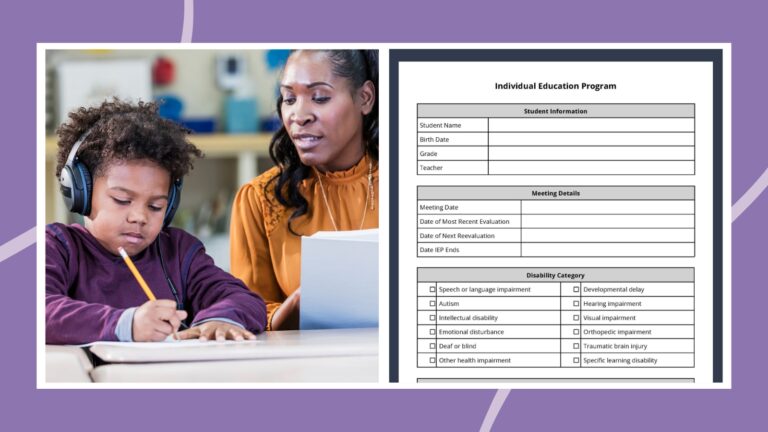Teach long enough, and you’ll surely have a lesson flop. Some lessons go mildly off-track—maybe the fire alarm goes off, or the super-engaging hook you planned isn’t enough to capture your students’ attention.
But there’s a special category of failed lessons … ones that crash and burn spectacularly, leaving you to all but watch in horror as the (hopefully) metaphorical flames engulf your best-laid plans.
I wasn’t naive enough to think I’d escape this, but I also didn’t expect to fall flat on my face only a few weeks into my first year in the classroom. What follows is the account of one of the worst lessons I ever taught, and what I was able to learn from the experience.
The lesson
I wanted to introduce my sixth graders to science and engineering practices in a meaningful way. I remembered an activity I’d been introduced to in a summer workshop called the Science and Engineering Practices Circus from the California Academy of Sciences, and I thought it would be a good starting point.
The activity combined a rotation of hands-on, high-engagement activities with class discussion to engage students in identifying the science skills they’d be developing throughout the course. In one station, students would watch yeast and sugar in warm water and generate questions about their observations. At another, they would play with Cartesian divers and make claims about what was happening.
It’s worth noting that this activity was designed for adult learners. The intent was that science teachers engaging in professional development around the practices would participate in seven stations. Then, they would make a case for which of the science and engineering practices they had engaged in during the station.
Of course, I realized I couldn’t just give my students the same activity that had been designed for adults. I made what I thought were appropriate modifications, starting by shortening the activity to three stations. My next modification was replacing one of the data analysis activities for modeling homemade mystery tubes. Rather than using durable PVC pipes, I constructed them by unraveling toilet paper from all the bathrooms in my home and using the cardboard tubes. Using the handfuls of unbound toilet paper in the weeks that followed only served to exacerbate my shame.
What went wrong?
Having read the above paragraph, perhaps you can see the writing on the wall. Or perhaps, like me, you’re thinking, “Wait, those sound like great activities! How could the kids not be engaged?” For those of you on the edge of your seat wondering what could have possibly gone awry, let me rip off the Band-Aid:
Every.
Activity.
Flopped.
I boiled my water too long, which killed the yeast. My poor students stared in confusion at the clumps of yeast, unsure what they should be observing. Next, my Cartesian divers sank but didn’t rise. Finally, one by one, each of my homemade mystery tubes broke, revealing the “mystery” of the construction inside.
Compounding the comedy of errors at each station was my underdeveloped classroom management plan. In their confusion, my students turned to other activities, chatting among themselves and playing with the lab materials. I was not yet effective at regaining my students’ attention and made several weak attempts to usher them to the other stations that had yet to break down. When it was clear to me that the stations couldn’t be salvaged, I decided I’d need to think quickly to get anything out of the lesson.
How I handled it in the moment
Luckily, I had a projector and a whiteboard in my classroom. Leaving my students to flounder a few minutes longer, I quickly found some YouTube videos showing how the activities should have worked. After calling students back to their seats, we watched the videos and briefly discussed the science and engineering practices they demonstrated.
However, the meat of our conversation actually turned out to be about the nature of science itself. We talked about how scientists often fail, and how seemingly small changes can influence the outcome of an experiment. I also openly admitted that the activity had not gone according to plan (I couldn’t really hide it at that point), and that failure is an opportunity to learn. I told them that I clearly wasn’t perfect, and I didn’t expect them to be either. As long as they were making an honest effort to do their best, that was all I could ask. I think the experience made them more open to taking risks and sharing their ideas. After all, they had a firsthand example of someone recognizing a failed attempt and learning from it!
What I took away from the experience
Reflecting on this experience four years later, I realize there was a lot I was able to take from it. What follows is a list of the lessons I learned from that day, and the inevitable subsequent flopped lessons that followed. It’s OK to take a chance and try something new. If it doesn’t work the way you wanted, take a closer look at why.
1) Reflection is super important. Use your observations and adjust next time.
2) You can admit to students when you’ve messed up and ask them for their input. Sometimes they’ll have great ideas about how to improve a lesson or procedure. This year, I got in the habit of asking my first period for feedback on the timing of station activities. This is great to help them reflect on their time management skills. Also, things typically went smoother in the next class when I took their input into account.
3) Don’t bite off more than you can chew. You may have noticed there was a LOT going on in my aforementioned lesson plan. Choosing one of the three activities would likely not have stopped it from failing. But at least it would have been less panic-inducing than watching three activities crash and burn.
4) Have a backup plan. With lab activities, it’s a great idea to have a reference data set ready for comparisons. Simulations with expected results are also great. Both can lead to a discussion about variables that you struggled to control in the classroom. Just focus on the learning process sometimes being a messy one, rather than blaming student error. In non-lab settings, examples of finished products or worked problems can also be great for students who are straying too far from the intended outcome.
If you’re stuck without a backup plan to salvage your lesson plan, transition to a backup activity: something your students know how to do independently (journaling, writing a reflection on Google Classroom, etc.) and that you can resort to on the spot while you get your bearings.
And finally, the most important thing I learned:
5) A single (or even multiple) bad lesson(s) does not define your effectiveness as a teacher. Let’s say it louder for the people in the back! As hard as it can be to remember when it feels like you just pushed your students overboard, you’re out there taking risks, trying new things, and doing a job most people would never attempt. That, in and of itself, makes you the kind of teacher your students are lucky to have.
Have you ever had a lesson totally flop? How did you handle it? Tell us about it in the comments!
Plus, for more articles like this, be sure to subscribe to our newsletters to find out when they’re posted.

WeAreTeachers

